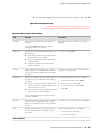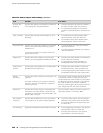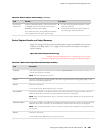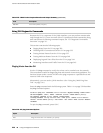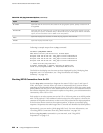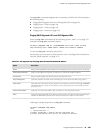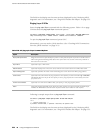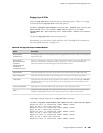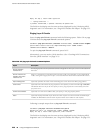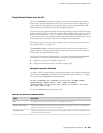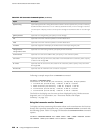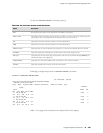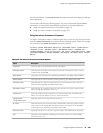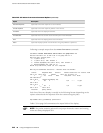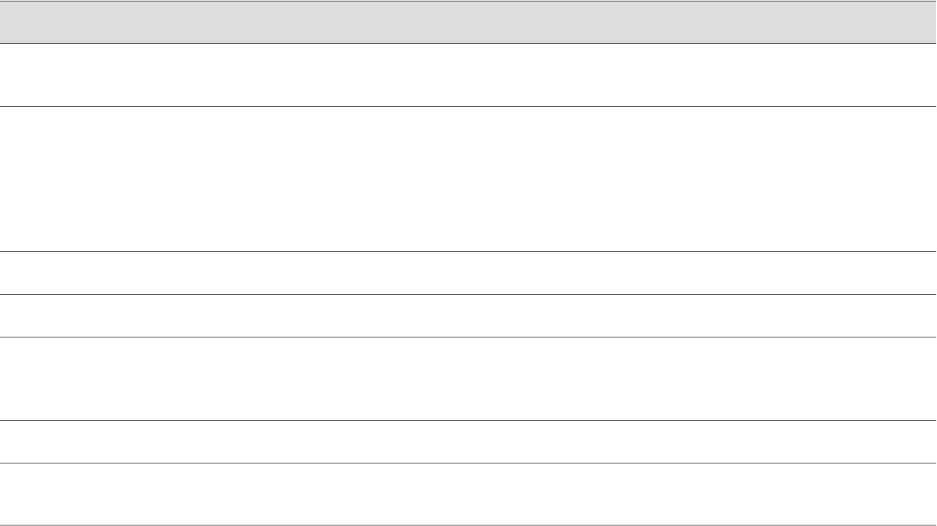
Pinging Layer 2 VPNs
Enter the ping mpls l2vpn command with the following syntax. Table 119 on page
235 describes the ping mpls l2vpn command options.
user@host> ping mpls l2vpn interface interface-name | instance l2vpn-instance-name
local-site-id local-site-id-number remote-site-id remote-site-id-number
<bottom-label-ttl> <exp forwarding-class> <count number> <source source-address>
<detail>
To quit the ping mpls l2vpn command, press Ctrl-C.
Alternatively, you can use the J-Web interface. (See “Checking MPLS Connections
from the J-Web Interface” on page 219.)
Table 119: CLI ping mpls l2vpn Command Options
DescriptionOption
Sends ping requests out the specified interface configured for the Layer 2 VPN on the outbound
(egress) PE router.
l2vpn interface
interface-name
Pings on a combination of the Layer 2 VPN routing instance name, the local site identifier, and
the remote site identifier, testing the integrity of the Layer 2 VPN circuit (specified by the
identifiers) between the inbound (ingress) and outbound PE routers.
l2vpn instance
l2vpn-instance-name
local-site-id
local-site-id-number
remote-site-id
remote-site-id-number
(Optional) Displays the time-to-live (TTL) value for the bottom label in the MPLS label stack.
bottom-label-ttl
(Optional) Specifies the value of the forwarding class to be used in the MPLS ping packets.
exp forwarding-class
(Optional) Limits the number of ping requests to send. Specify a count from 0 through 1,000,000.
The default value is 5. If you do not specify a count, ping requests are continuously sent until
you press Ctrl-C.
countnumber
(Optional) Uses the source address that you specify, in the ping request packet.
source source-address
(Optional) Displays detailed output about the echo requests sent and received. Detailed output
includes the MPLS labels used for each request and the return codes for each request.
detail
Following is sample output from a ping mpls l2vpn command:
user@host> ping mpls l2vpn instance vpn1 remote-site-id 1 local-site-id 2 detail
Request for seq 1, to interface 68, labels <800001, 100176>
Reply for seq 1, return code: Egress-ok
Request for seq 2, to interface 68, labels <800001, 100176>
Reply for seq 2, return code: Egress-ok
Request for seq 3, to interface 68, labels <800001, 100176>
Reply for seq 3, return code: Egress-ok
Request for seq 4, to interface 68, labels <800001, 100176>
Reply for seq 4, return code: Egress-ok
Request for seq 5, to interface 68, labels <800001, 100176>
Using CLI Diagnostic Commands ■ 235
Chapter 12: Using Services Router Diagnostic Tools



